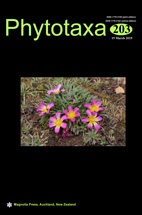Abstract
Shangri-la region of southwestern China is within the Hengduan Mountains biodiversity hotspot and is exceptional in floral diversity. Based on intensive field investigations and herbarium specimens, 6807 species of native seed plants from 1297 genera and 166 families were recognized. The flora is dominated by families and genera with cosmopolitan and north temperate distributions, including Apiaceae, Asteraceae, Ericaceae, Fabaceae, Gentianaceae, Lamiaceae, and the genera Pedicularis, Rhododendron, and Salix, which contribute up to 73.15 % of the total number of species, but only make up a small portion of the total number of families and genera. Families and genera with fewer species more commonly have tropical distributions, while East Asian and Chinese endemic families and genera are mostly monotypic and oligotypic, and contribute little to the floristic diversity of the region. It is revealed that the flora of Shangri-la might have evolved through rapid speciation mainly from families and genera of cosmopolitan and north temperate distributions with the uplift of the Himalayas and climatic oscillations after the late Tertiary. The macroevolution of the flora in the Shangri-la region interpreted by floristic patterns is well supported by phylogeographic studies on plant taxa in Hengduan-Qinghai-Tibet Plateau regions.

